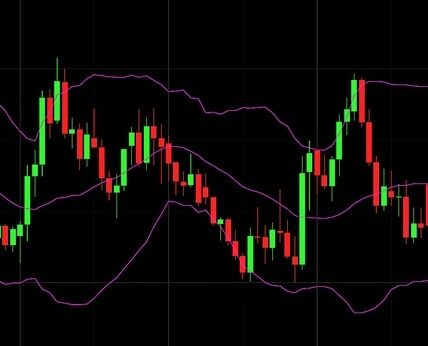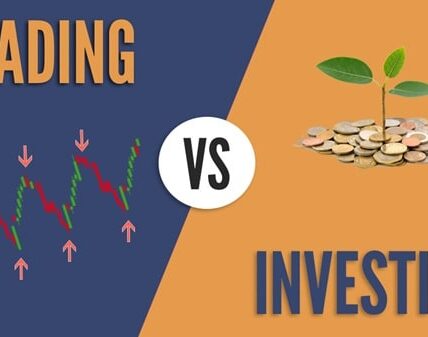Trading in the stock market can be done in several ways, but two of the most popular styles are swing trading and day trading. Both strategies aim to make profits from price movements, but they differ in terms of time frame, risk, and approach.
If you’re new to trading or trying to choose the right strategy for your goals, understanding the key differences between swing trading and day trading can help you make an informed decision.

What Is Day Trading?
Day trading refers to buying and selling financial instruments — such as stocks, forex, or commodities — within the same trading day.
Day traders close all positions before the market closes to avoid overnight risks. Their goal is to make profits from small price fluctuations throughout the day.
Key Features of Day Trading:
- Trades last from a few minutes to hours
- Positions are closed the same day
- Requires constant market monitoring
- Relies heavily on technical analysis and indicators
- Often involves multiple trades in a single day
Example:
Suppose you buy 100 shares of Infosys at ₹1,650 in the morning and sell them at ₹1,670 in the afternoon — making ₹2,000 in profit the same day. That’s a typical day trade.
What Is Swing Trading?
Swing trading is a style of trading where positions are held for several days to weeks to capture medium-term price movements.
Swing traders aim to take advantage of “swings” in market trends — both upward and downward — using a mix of technical and fundamental analysis.
Key Features of Swing Trading:
- Trades last from a few days to several weeks
- Positions may be held overnight or longer
- Less time spent monitoring markets
- Focuses on larger price moves
- Uses both technical and trend analysis
Example:
You buy TCS shares at ₹3,600 and sell them a week later at ₹3,800 after a bullish trend — earning ₹200 per share. This is an example of swing trading.
Main Differences Between Swing Trading and Day Trading
| Aspect | Swing Trading | Day Trading |
| Time Frame | Several days to weeks | Within the same day |
| Number of Trades | Fewer trades | Multiple trades per day |
| Holding Period | Overnight positions allowed | No overnight positions |
| Risk Level | Moderate | Higher (due to intraday volatility) |
| Profit Potential per Trade | Higher per trade | Smaller but frequent gains |
| Analysis Used | Technical + Fundamental | Mostly Technical |
| Capital Requirement | Moderate | Higher (for margin and quick execution) |
| Time Commitment | Low to moderate | Very high – full-time attention needed |
Advantages of Day Trading
- Quick Profits:
Day trading allows you to earn money within hours if you can correctly predict short-term movements. - No Overnight Risk:
Since positions are closed before the market closes, you’re protected from unexpected overnight news or price gaps. - High Liquidity:
Intraday trades are usually made in highly liquid stocks, ensuring fast entry and exit. - Multiple Opportunities Daily:
Active markets provide several trading opportunities each day.
Disadvantages of Day Trading
- High Stress Level:
Constant price monitoring and quick decisions can be mentally exhausting. - High Transaction Costs:
Frequent buying and selling lead to more brokerage and tax costs. - Requires Advanced Skills:
Day trading demands deep technical knowledge, speed, and discipline. - High Risk of Loss:
A wrong trade or emotional decision can lead to significant losses within minutes.
Advantages of Swing Trading
- Less Time-Intensive:
Swing traders don’t need to sit in front of screens all day. A few hours of analysis each week is often enough. - Bigger Price Moves:
Holding trades for days allows you to benefit from larger market swings. - Lower Stress:
Fewer trades mean less emotional pressure compared to day trading. - Combination of Analysis Methods:
Swing traders use both technical charts and fundamental news for decision-making.
Disadvantages of Swing Trading
- Overnight Risk:
Price gaps caused by news events or earnings reports can impact your position negatively. - Slower Returns:
Since trades take days to complete, profits come slower than day trading. - Requires Patience:
It might take several days for a setup to play out. - Interest or Holding Charges:
If you use margin, you may pay additional charges for holding overnight positions.
Which Is Better: Swing Trading or Day Trading?
There’s no absolute winner — it depends on your personality, goals, capital, and availability.
Here’s how you can decide:
- Choose Day Trading if you:
- Can dedicate several hours daily to watching markets
- Enjoy fast-paced decision-making
- Have sufficient capital and risk tolerance
- Are experienced with technical analysis
- Choose Swing Trading if you:
- Have a full-time job or limited time for trading
- Prefer a balanced approach between investing and trading
- Want to reduce stress and avoid constant market watching
- Are willing to hold trades overnight
Example Scenario
Let’s say you have ₹2 lakh to trade.
- As a day trader, you might make 5–10 trades daily, earning small profits each time, but also risking quick losses.
- As a swing trader, you might open 2–3 positions weekly and aim for higher profits per trade with lower stress.
In the long run, both can be profitable — but the consistency depends on your strategy, discipline, and emotional control.
Final Thoughts
Both swing trading and day trading can be profitable if done correctly. Day trading offers speed and excitement, while swing trading offers flexibility and patience.
If you’re a beginner, it’s usually wiser to start with swing trading, as it’s less stressful and allows time to understand market trends. Once you gain experience, you can explore day trading for quicker returns.
Remember, success in trading depends more on your discipline, risk management, and learning attitude than on the strategy you choose.








